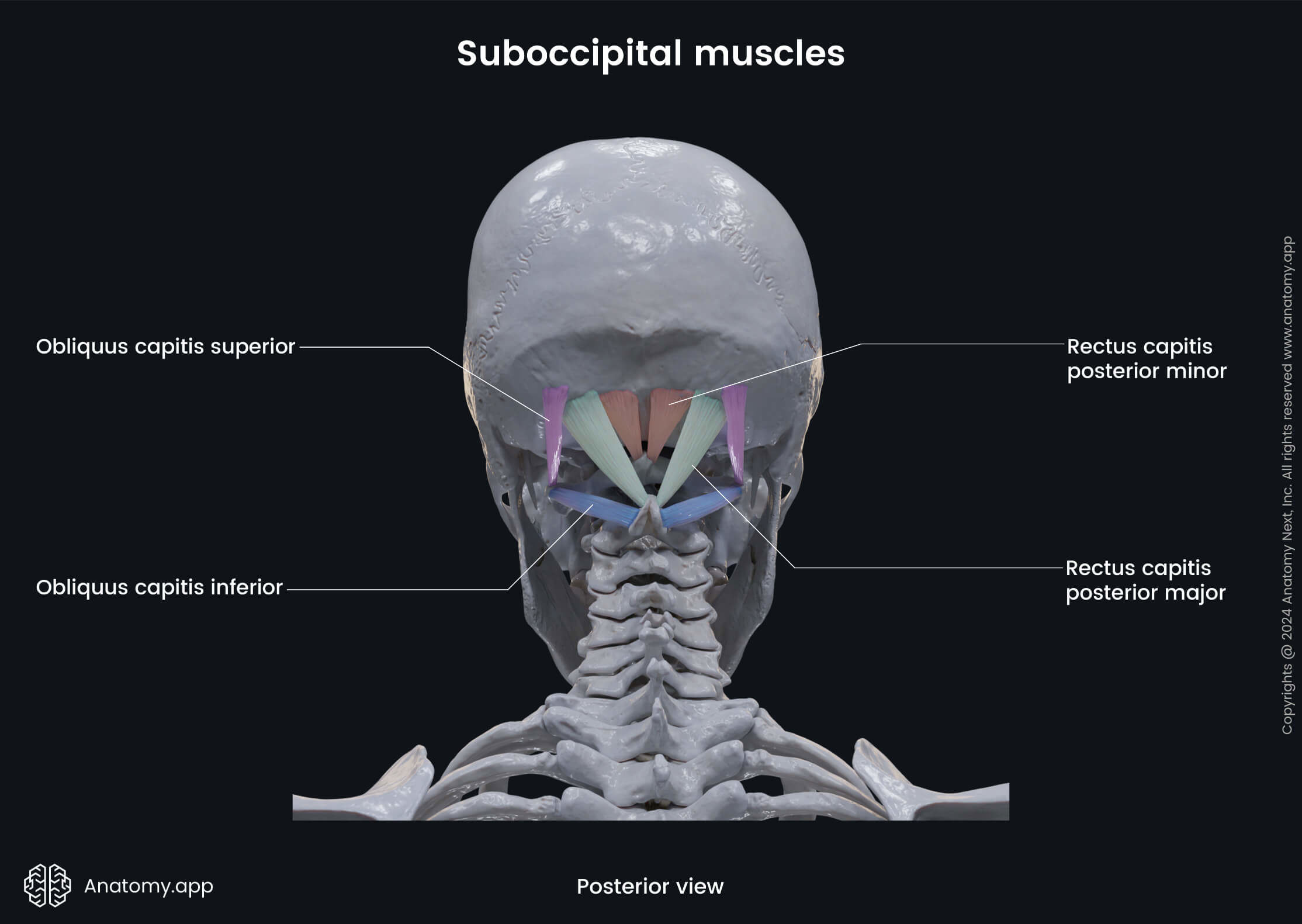- Anatomical terminology
- Skeletal system
- Joints
- Muscles
- Head muscles
-
Neck muscles
- Superficial neck muscles
- Scalene muscles
- Suprahyoid muscles
- Infrahyoid muscles
- Prevertebral muscles
- Suboccipital muscles
- Muscles of upper limb
- Thoracic muscles
- Muscles of back
- Muscles of lower limb
- Heart
- Blood vessels
- Lymphatic system
- Nervous system
- Respiratory system
- Digestive system
- Urinary system
- Female reproductive system
- Male reproductive system
- Endocrine glands
- Eye
- Ear
Obliquus capitis inferior
The obliquus capitis inferior (Latin: musculus obliquus capitis inferior) is a small, slender muscle of the neck that stretches between the first two cervical vertebrae. It is positioned in the posterior compartment of the neck. Therefore, the obliquus capitis inferior is one of the posterior neck muscles. It is located in the deepest layer of the group. As the obliquus capitis inferior is situated below the occipital bone of the skull, it is classified as the suboccipital muscle. It acts at the atlanto-axial joint.

| Obliquus capitis inferior | |
| Origin | Spinous process of axis (C2) |
| Insertion | Transverse process of atlas (C1) |
| Action | Unilateral contractions - Head rotation (ipsilateral) |
| Innervation | Suboccipital nerve (posterior ramus of 1st cervical spinal nerve (C1)) |
| Blood supply | Branches of vertebral and occipital arteries |
Origin
The obliquus capitis inferior muscle originates from the spinous process of the axis (C2).

Insertion
The obliquus capitis inferior inserts on the transverse process of the atlas (C1).
Action
The primary function of the obliquus capitis inferior muscle is the rotation of the head to the ipsilateral side.
Innervation
The obliquus capitis inferior is innervated by the suboccipital nerve - the posterior ramus of the 1st cervical spinal nerve (C1).
Blood supply
The obliquus capitis inferior muscle receives arterial blood supply from the branches of the occipital and vertebral arteries.